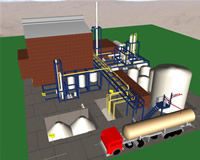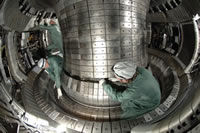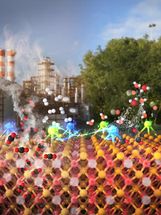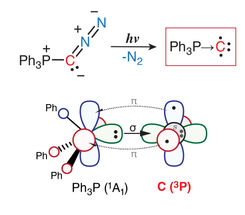Hydrogen offers a new way to study the Moon
The Moon is a surprisingly strong source of hydrogen atoms. That is the surprise discovery from the Swedish Institute of Space Physic's instrument SARA on board the Indian Chandrayaan-1 lunar orbiter. It gives scientists an interesting new way to study both the Moon and any other airless bodies in the solar system.
According to conventional wisdom, the lunar surface is a loose collection of irregular dust grains. Any particle that hits it should bounce between the grains and be absorbed. But the new results clearly show that one out of every five protons incoming from the solar wind rebounds from the Moon's surface. In the process, the proton joins with an electron to become an atom of hydrogen.
"We didn't expect to see this at all," says Stas Barabash, Swedish Institute of Space Physics (IRF), who is the European Principal Investigator for the SARA (Sub-keV Atom Reflecting Analyzer) instrument, which made the discovery.
"It's an amazing discovery for the planetary scientific community in general and for lunar science in particular," says Anil Bhardwaj, who is the Indian Principal Investigator from the Space Physics Laboratory, Vikram Sarabhai Space Centre, Trivandrum. SARA was one of three instruments that the European Space Agency (ESA) contributed to Chandrayaan-1, the lunar orbiter that completed its mission in August 2009, and was built jointly by scientific groups from Sweden, India, Japan and Switzerland.
Although Barabash and his colleagues do not know what is causing the Moon to act as a hydrogen mirror, the discovery paves the way for a new type of picture to be made of the lunar surface. This is because the hydrogen atoms shoot off with speeds of around 200 km/s and so escape without being deflected by the Moon's weak gravity. Also, because hydrogen is electrically neutral, it is not diverted by the magnetic fields in space. So the atoms fly in straight lines from the surface of the Moon, just like photons of light. In principle, each detection can be traced back to its origin and an image of the surface can be made. The areas that emit most hydrogen will show up the brightest.
Barabash and his team are currently analysing the data to see if they can make such pictures, in order to look for so-called lunar magnetic anomalies. Whilst the Moon does not generate a global magnetic field, some lunar rocks are magnetised. These generate magnetic bubbles that deflect incoming protons away into surrounding regions. In a hydrogen image, the magnetic rocks will therefore appear dark.
The incoming protons are part of the solar wind, a constant stream of particles given off by the Sun. They collide with every celestial object in the Solar System but are usually stopped by the object's atmosphere. On objects without such a natural shield, for example asteroids or the planet Mercury, the solar wind reaches the ground. The SARA team expects that these objects too will reflect many of the incoming protons back into space as hydrogen atoms.
This knowledge provides timely information for the scientists and engineers who are readying ESA's BepiColombo mission to Mercury. The spacecraft will be carrying two similar instruments to SARA and may find that the inner-most planet is reflecting more hydrogen than the Moon because the solar wind is more concentrated closer to the Sun. In the meantime, the SARA team is combing the lunar data for insight, and puzzling over just why the Moon is so good at reflecting hydrogen.
The SARA instrument was built jointly by the Swedish Institute of Space Physics, Kiruna, Sweden; the Vikram Sarabhai Space Centre, Trivandrum, India; University of Bern, Switzerland; and the Institute of Space and Astronautical Science, Sagamihara, Japan.
Most read news
Other news from the department science

Get the chemical industry in your inbox
By submitting this form you agree that LUMITOS AG will send you the newsletter(s) selected above by email. Your data will not be passed on to third parties. Your data will be stored and processed in accordance with our data protection regulations. LUMITOS may contact you by email for the purpose of advertising or market and opinion surveys. You can revoke your consent at any time without giving reasons to LUMITOS AG, Ernst-Augustin-Str. 2, 12489 Berlin, Germany or by e-mail at revoke@lumitos.com with effect for the future. In addition, each email contains a link to unsubscribe from the corresponding newsletter.




















































